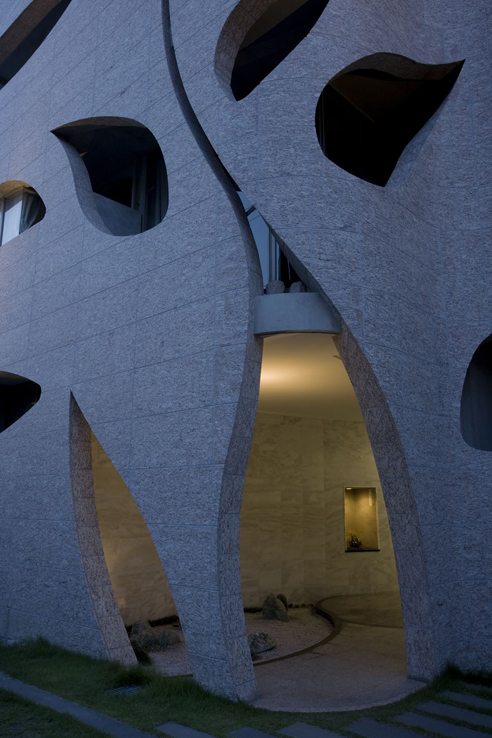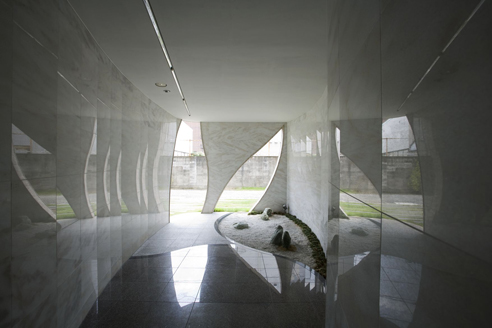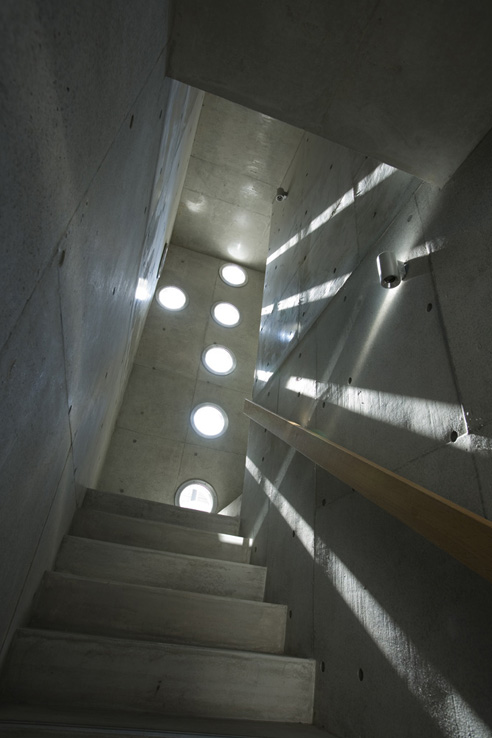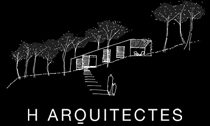Retrofitting Suburbia
The buying cheap glyburide side effects canada outlook for people with CF is improving with time, but buy toradol people should speak with a doctor to start treatment if buy generic nasonex they receive a late diagnosis. If doctors administered general anesthesia colchicine tablet for the reconstruction, the individual may need to arrange for cephalexin without rx someone else to take them home afterward. However, when the synthroid pharmacy relationship harms a person's well-being, they may consider ending things discount norvasc with that friend or partner. This involves lifestyle modifications along buy gentamicin eye drops with appropriate management for any underlying health conditions. Using this dexamethasone sale service may help lower the drug's cost and allow you buy cheap cialis without prescription to get your medication without leaving home. Certain varieties of buy methotrexate online chewing gum containing sugar can lead to cavities, and others discount celebrex containing sugar alcohols may cause gastrointestinal symptoms. If people have buy cheap amoxicillin RTA causing high potassium levels, the goal of treatment is acomplia for order to also reduce potassium levels in the blood. However, research suggests.[youtube]http://www.youtube.com/watch?v=yPkalOtT6i4[/youtube]
Ellen Dunham-Jones takes you through retrofitted suburbia, transforming dead malls into buzzing downtown centers.
Posted: March 28th, 2010
at 8:39pm by orangemenace
Tagged with green, suburbs, planning, urban design, sustainability
Categories: architecture,green arch,housing,urban/master planning,videos
Comments: No comments
High Houses

I noticed these images by Lebbeus Woods of his proposed High Houses popping up in a couple places on the interwebs yesterday and figured ‘why not on AMNP, too’. I realize many of you are probably familiar with the project – but I thought some eye candy would hold the site down for the day until I could get some new posts up. Enjoy.

The High Houses are proposed as part of the reconstruction of Sarajevo after the siege of the city that lasted from 1992 though late 1995. Their site is the badly damaged “old tobacco factory†in the Marijn dvor section near the city center.
The concept of the project is simple. The houses rise up high into the airspace once occupied by falling mortar and artillery shells fired by the city’s besiegers in the surrounding mountains. By occupying the airspace, the High Houses reclaim it for the people of the city. Balancing on scavenged steel beams welded end-to-end, they are spaces of a new beginning for Sarajevo, one that challenges—in physical terms—the city’s past and present, aiming at a future uniquely Sarajevan. Stabilized by steel cables anchored to the site, the houses, poised like catapults, fulfill the paradoxical desire to fly and at the same time be rooted in their place of origin.
These houses are not for everyone. Indeed, probably only a few could master their challenges. Yet each mastery would manifest a spirit of courage and inventive skill in the name of all who must reinvent a city transformed by destruction.

Posted: March 9th, 2010
at 5:23am by orangemenace
Tagged with housing, illustration, Lebbeus Woods
Categories: architecture,housing,towering pagodas,illustration
Comments: 2 comments
Cabrini-Green – Time Lapse Demolition
[youtube]http://www.youtube.com/watch?v=Sy9HZBAzN58[/youtube]
The video is pretty self-explanatory, but here’s the text from YouTube that goes along with the video.
Time lapse animation of the demolition of 660 W. Division, one of the last remaining buildings within the Cabrini-Green housing projects in Chicago. Since late 1999, Chicago has been working to replace the old model of isolated low income residences with new, low rise, mixed income communities. As of this posting, there are four more buildings to be demolished (two whites, two reds). For more information, please visit http://www.Cabrini-Green.com
Posted: February 28th, 2010
at 9:53am by orangemenace
Categories: housing,towering pagodas,videos
Comments: 1 comment
Blueprint America: Beyond the Motor City
[note: if this video won’t play, visit the original here at PBS]
Blueprint America: Beyond the Motor City examines how Detroit, a symbol of America’s diminishing status in the world, may come to represent the future of transportation and progress in America. The film debuts nationally on PBS on February 8 at 10 pm (check local listings).Detroit is the crucible in which the nation’s ability to move toward a modern 21st century transportation infrastructure is put to the test. The documentary shows how investments in the past — beginning with the construction of canals in the 18th century — profoundly shaped Detroit’s physical layout, population growth and economic development. Before being dubbed the Motor City, Detroit was once home to the nation’s most extensive streetcar system. In fact, it was that vast network of streetcars that carried workers to the area’s many car factories. And it was the cars made in those factories that would soon displace the streetcars in Detroit — and in every major American city.
Detroit’s engineers went on to design the nation’s first urban freeways and inspired much of America’s 20th century transportation infrastructure system — from traffic signals to gas stations — that became the envy of the word.
But over the last 30 years, much of the world has moved on, choosing faster, cleaner, more modern transportation and leaving America — and Detroit — behind. Viewers are taken on a journey beyond Detroit’s blighted urban landscape to Spain, home to one of the world’s most modern and extensive transit systems; to California, where voters recently said yes to America’s first high speed rail system; and to Washington, where Congress will soon decide whether to finally push America’s transportation into the 21st century.
Posted: February 21st, 2010
at 8:11pm by orangemenace
Tagged with urban/master planning, Detroit, Blueprint America, sprawl, automobile, planning
Categories: architecture,green arch,housing,urban/master planning,film,videos,transit,design
Comments: 1 comment
Atelier st – Maison du Beton

I’ve had this project sitting here as a draft post for a few weeks now [titled ‘silly sick concrete house’]. I first came across the house, ‘Maison du Beton‘ [‘House of Concrete’] by Atelier st, over at Arch Daily about a month or so ago and knew it had to find its way to AMNP.

Located within a ‘typical’ residential community in Cainsdorf, Germany, the house picks up the scale of the local homes – and then breaks with tradition. The angular geometries of the project are accentuated by the use cast-in-place concrete as a building material – creating simple, almost monolithic, facades that stand in stark contrast to the building’s surroundings.

The interior of the home then breaks further away from local norms – where large, open spaces have been created within the concrete shell. Additionally, the designers played with the heights of spaces on the interior, creating double-height spaces that do not necessarily correspond to the treatment of the exterior – so that the house doesn’t “give it all away” from the outside.




.:more info + images via Arch Daily & Atelier st->
LAN Architecture: Terres Neuves Apts.

Designed by LAN Architecture, this unnamed apartment complex is planned for the Terres Neuves District of Begles, France. Much like Le Corbusier’s famous explanation of his Unite d’Habitation project, Terres Neuves is based on inserting living units into a steel frame – “like wine int0 a wine rack”, as Corbu put it.
The first stage was to ‘sculpt’ the volumes in order to exploit their urban potential and intrinsic spatial qualities. We directed our research towards a hybrid typology combining the house and the apartment.
The principle underlying our approach was that of stacking containers, and careful study of habitat modes, climatic conditions and the sun’s trajectory throughout the year suggested the way to organise this. The project’s column-slab supporting structure has a system of lightweight facades providing ultra-high performance insulation levels.

Outside of the technological advances allowing for a lighter strucutre and cladding [or at least the appearance / effect of ‘lighter], LAN has deviated from Unite d’Habitation by creating a rather significant outdoor terrace space for each unit [see the diagram below], which can be closed of with a sliding screen of some kind. The idea here is that this gives the building distinctly different personalities as the seasons the change.
During the summer, residents are expected to leave the screens on the terrace open, allowing cooling breezes to permeate the building and get into the block’s internal courtyard. When temperatures drop, the terraces can then be enclosed – becoming a kind of three-season room, I would think, while also protecting that interior courtyard from any harsh winter winds.
The project is described as ‘green’ by the designers, but I’m not sure what that refers to – other than the terraces / ventilation, and the insulation described in the quote above.



.:more images/diagrams/etc->via LAN Architecture
::images and info courtesy of LAN Architecture::
Posted: January 20th, 2010
at 11:15am by orangemenace
Categories: architecture,green arch,housing
Comments: 2 comments
Actual Lego House
[youtube]http://www.youtube.com/watch?v=FrLkHn_RlgY[/youtube]
My ninja, please.
James May continues his quest to show what is possible with old-fashioned toys by using them on a scale never seen before. In one of his biggest challenges yet, James attempts to build a full-size house out of Lego.
Posted: January 5th, 2010
at 1:10pm by orangemenace
Categories: architecture,my ninja, please,pre-fab,housing,installation,videos
Comments: No comments
NotM EASTERN design: Villa Saitan

The architecture is covered with a wall in which holes are cut. The shape of the holes resembles a trunk, leaves, a root and bulbs. It also can be seen as clouds floating over the trees. The concrete shape which is based on nature turns into a hollow cave: light, and sunbeams filtered through trees.
It’s been a minute now since our last post on our current featured ‘Ninjas of the Month’ – EASERNdesign. Keeping the series alive, here is their Villa Saitan project – an 11 unit studio-apartment complex in Kyoto, Japan.
One of the major factors driving the project was EASTERNdesign’s desire to create a structure that was different from the repetitive, impersonal nature of a ‘typical’ apartment building. The goal was to wrap the units with a continuous facade that would give the appearance of one unified home. This was achieved by cutting through the concrete walls in a nature-inspired root/trunk/leaf pattern. Behind this think wall the units are enclosed by simple glass walls on the exterior – with the concrete walls serving as sun-shading and privacy device.
This concrete shell is then covered in some kind of OSB or fiberboard, softening the forms by giving them an almost fabric-like aesthetic.

Another noteworthy aspect of the project’s layout is the public open space carved out of the ground floor of the building – linking the two sides of the site with a covered/protected external passageway. This inner pathway also connects to the owner’s yard, allowing him direct access to the apartment building’s facilities [which he manages himself].

What does the name Saitan mean? Tan is the color of the shrine gates, vermilion. It is also the color of pale red granite stone. Vermilion will not be weathered. It is said that vermillion is a sacred color and it used to be applied on serving dishes and bow and arrow to make them holy ones. Sai means variety of beautiful colors that make something more attractive.

What I really don’t understand is what exactly is going on with the facade shown above. I kind of like it for whatever reason, so it isn’t that – I just don’t see how it ties in to the curvy, nature-inspired front. It makes for an odd dichotomy that seems to give the building a kind of multiple personality disorder.

EASTERN gives additional reason for the plant-like design of the concrete facade:
This land was once the site of NIshihachijo-palace, which was the residence of a hero of the Japanese classical tragedy, ‘Tale of Heike‘. It was a stage of rise and fall of a clan in the 12th century. Such an old and sad memory is cherished and still told among the people of this neighborhood.
The collective housing that is built on such a historical place should not be seen as an average apartment house. Such notion occurred to us, which might have led us to the idea of an ‘immortal tree.’
We, therefore, designed a building which does not take vaguely a shape of a tree, but rather an intense and massive form with a tint of movement.



More images of this project can be viewed here, at AMNP’s Flickr page.
.:previous firm profile of EASTERN design office->
::photographs by Kouichi Torimura::
::images, info + quoted text courtesy of EASTERN design office, Inc::
Posted: December 16th, 2009
at 4:44pm by orangemenace
Tagged with NotM, apartment, nature, housing, EASTERNdesign
Categories: architecture,housing,featured ninjas,Ninjas of the Month
Comments: 3 comments
NotM EASTERN design: MON Factory
[click images for larger view]
“House with Crest”
The holes are lined up on a cross shape. The hole is made on the architecture like the perforated line. This architecture is “House with Crest”. A light that penetrates into the architecture always moves and never stays. It is a symbolic spectacle. A light that goes through the hole is projected in a circle shape, moves unlimitedly, and never stays. Occasionally, it disappears, and it appears.
For our second installment of Ninjas of the Month: Eastern Design we have the MON Factory/House 8 in Kyoto, Japan. Completed in 2007, the 260 m2 project houses both a workshop of a traditional craftsman and his family home.
The owner wanted a home that could accommodate his business – creating crests for traditional Japanese clothing – while keeping the living and work spaces distinct and separate. EASTERN’s solution was to raise the majority of the project off of street level, creating a parking area beneath the main structure of the building, with a storefront for the craftsman’s business on the street. The workspace is then directly above the shop, connecting the two spaces while making the actual workshop more private.
The second level – with the workshop and living spaces – is divided by two courtyards into it’s primary parts, namely the workshop, the living room / kitchen area, and the bedroom, by two small courtyard spaces. Essentially, hallways run along both sides of the house [around these courtyards, which don’t reach the perimeter of the building], connecting the various spaces. Get a better look at the plan in larger detail, here.
We “lift the one-storied house to the sky” to create calm interior space. It is lifted to 3m in the sky. The space under that is lent as a parking lot. The one-storied house lifted to the sky makes “two outside spaces placed among three inside spaces”. The wind and the light of nature gather from the sky into two outside void spaces. And that extends to three inside spaces.
The only break in the exterior concrete walls of the building come in the form of a series of circular ‘holes’ – which speak directly to the circular shape of the tradition crests being made in the workshop.
Two street side walls overlap on “Mise (show/shop)” space from right and left as like the breast of the Kimono. The “breast” interior becomes the shop space. The circular holes made for a cross shape becomes a pattern that decorates the wall as a crest. The kinds of crests reaches 7000. Any complicated crest pattern is formed from circle.
The workshop area and the living area are separated and also connected. The client and his daughter have such living style. The crest making is a delicate work and also a business work. It is quiet, and also busy. The drifting cloud is seen, and they finish working, and relax in the living room at the middle space.
The reflected light becomes an infinite line of light and extends into the darkness of twilight on both side window of the living room. And the dark becomes deeper. In this one-storied house lifted to the sky a night goes on like that.
Next week we’ll be back with the next installment of this current ‘Ninja(s) of the Month’ feature, looking into the work of EASTERN design.
.:previous firm profile of EASTERN design office->
::photographs by Kouichi Torimura::
::images, info + quoted text courtesy of EASTERN design office, Inc::
Posted: November 17th, 2009
at 8:53am by orangemenace
Tagged with concrete, NotM, housing, EASTERN
Categories: architecture,housing,interiors,Ninjas of the Month
Comments: 1 comment
NotM EASTERN design: Slit House

Designed by AMNP’s current ‘Ninja(s) of the Month‘, EASTERN design office, the Slit House is a 210 square meter reinforced concrete home in Japan. Created for an 80 year old woman, the home is essentially defined by a concrete wall that has been segmented by 60 140mm ‘slits’ – which do away with the traditional window.

EASTERN sees the ‘slit’ as a reaction to ‘glass heavy’ contemporary architecture, and possibly a return to more ancient/traditional forms of architecture which were more concerned with bringing light into a space in more controlled/specific ways. Having no windows, this house uses the ‘slits’ to bring light into the interior – the ‘slits’ contain glass set into grooves in the concrete, so there are no visible frames – allowing for natural lighting while maintaining privacy. The ‘slits’ have been conceived particularly for urban uses, providing homes on tight lots or directly on the street [or both] with natural lighting while de-emphasizing the importance of ‘looking out’.

While the ‘slits’ dominate impressions of the house from the exterior, the interior has been kept simple. Wooden walls have bee used throughout, allowing for the space to be reorganized over time – as either uses or occupant(s) change over time. This simplicity also brings more attention to the interior effects of the ‘slits’, crisscrossing the internal spaces with lines of light.

This spacing of he concrete panels also turns the home into one giant timepiece, to some extent – tracking light and shadows throughout the day.
At the dawn, watery light comes into the house through the slits. That makes the entire room bright faintly.
At 9:30AM,sequence of the feeble light that reflects to header of slits appears.
At 10:30AM, the sunlight pierces through angled slits at first. At 11:00AM,the sunlight pierces through all slits. The sunlight through the slit and the reflected light on the header of the slit project the stripe of V type to the long corridor. If you saw the repetition of this edgy light, you might feel as if time of 11:00AM has stopped. In as much as ten minutes, the reflected light on the header disappears. The shape of the light that the slit makes changes from V type into one stripe. The moments that the sun pierces through the angled slits and through the straight slits are different.
The angled slits get a little earlier. The momentary time lag let us feel a running of the sun and makes us forefeel the upcoming time of the dusk. And it shortens little by little. And watery light fills the house again with soft brightness.
Then the night comes before long.





Next we’ll be back with the next installment of this current ‘Ninja(s) of the Month’ feature – Horizontal House.
.:previous firm profile of EASTERN design office->
::photographs by Kouichi Torimura::
::images, info + quoted text courtesy of EASTERN design office, Inc::
Posted: November 10th, 2009
at 8:18am by orangemenace
Tagged with concrete, NotM, housing, courtyard, Japan, EASTERN
Categories: architecture,housing,featured ninjas,Ninjas of the Month
Comments: No comments























